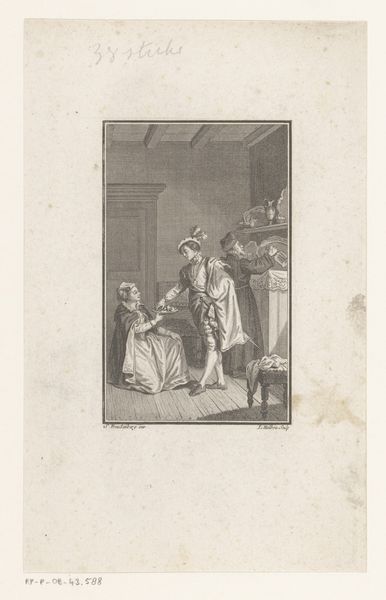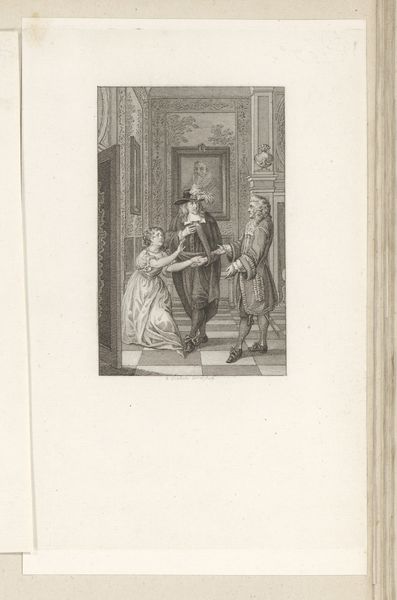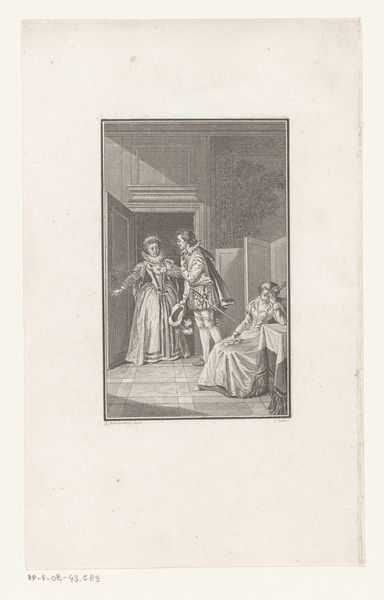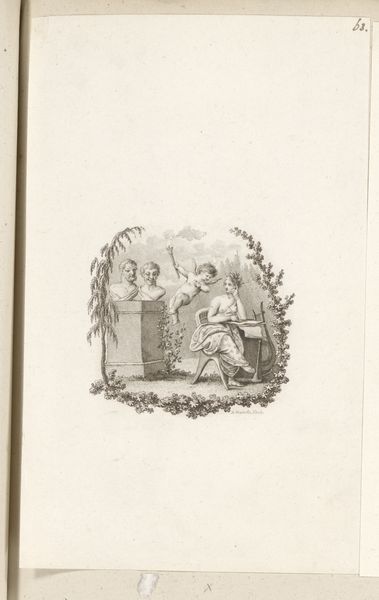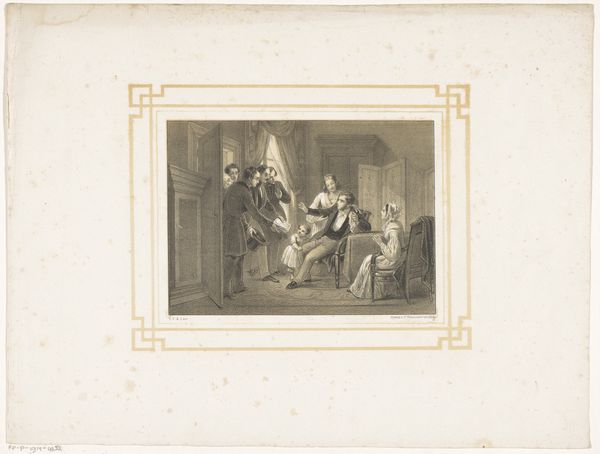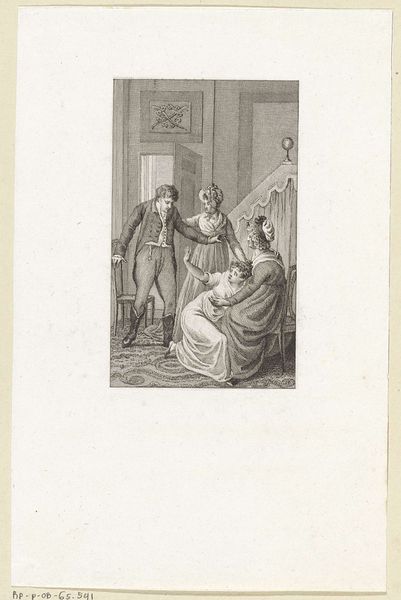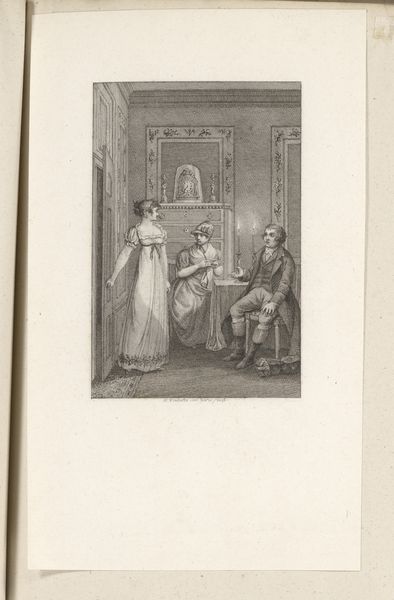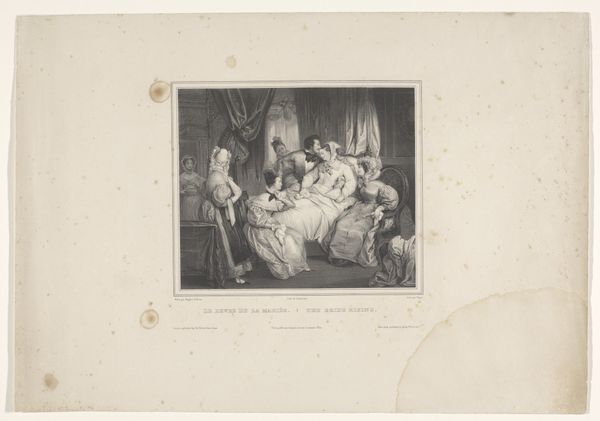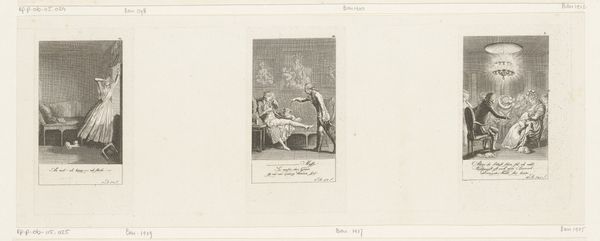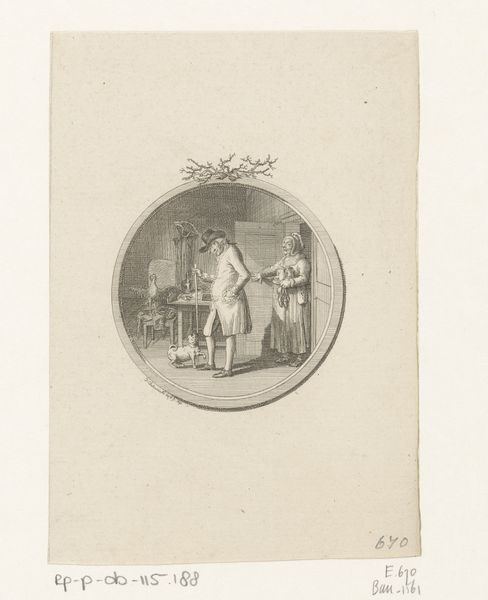
drawing, print, etching, ink, engraving
#
portrait
#
drawing
#
narrative-art
# print
#
etching
#
old engraving style
#
ink
#
romanticism
#
genre-painting
#
history-painting
#
engraving
Dimensions: height 240 mm, width 146 mm
Copyright: Rijks Museum: Open Domain
Curator: Welcome. Before us is "Dienstmeid toont een vrouw in haar kraambed het kind", an etching by Daniël (I) Veelwaard, dating back to 1816. It resides here at the Rijksmuseum. What are your initial impressions? Editor: A scene of intimate domesticity, yet oddly distant. The use of monochrome engenders a sense of both observation and almost clinical analysis, doesn't it? The composition feels very carefully constructed within its oval frame. Curator: Indeed. Observe how Veelwaard employs line to define space. The stark contrast between light and shadow emphasizes the curvature of forms. Note, particularly, the layering of etched lines, how they create tonal variation across the entire composition. This reinforces the texture of fabrics, wood, and skin. Editor: I'm immediately drawn to the maid presenting the newborn. She becomes the focal point, imbued with significance beyond her station. Her action feels archetypal – a ritual of introduction, loaded with societal expectation for future fertility and family lineage. Curator: The maid as a conduit, perhaps? Note, though, how Veelwaard uses visual cues to subvert hierarchy. While the maid is physically central, the composition balances around the mother in the bed, indicating her true position of honor. The child in her care becomes less an icon and more an important object in this precise arrangement of bodies and gazes. Editor: It's a dance of gazes! The mother looking at the child, the maid presenting. And even the seated lady on the side… the whole scene pulses with unspoken narratives. I wonder what personal hopes and dreams, fears even, these figures embodied for 19th-century audiences? The baby appears almost as a symbol of continuity. Curator: Fascinating insights! Yet, perhaps the symbol resides not in the baby alone, but in the network of connections, the linear progression and regression mapped out on the plate via the artist’s rigorous control of the etched line itself. It’s that structure which enables any reading of these implied meanings at all. Editor: Ultimately, it highlights how even the most seemingly straightforward images contain a depth of cultural and personal history within them. Curator: An artful demonstration that the artist invites us into both form and representation, for those who are open to seeing.
Comments
No comments
Be the first to comment and join the conversation on the ultimate creative platform.
